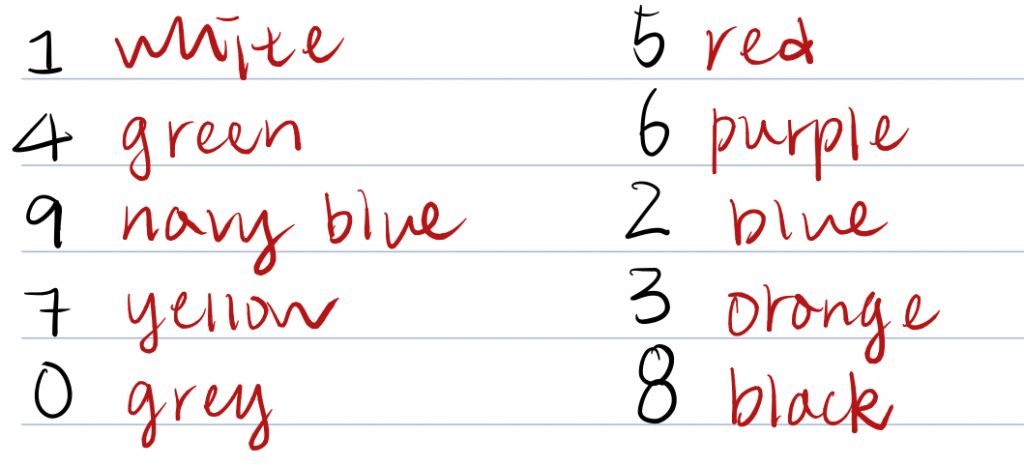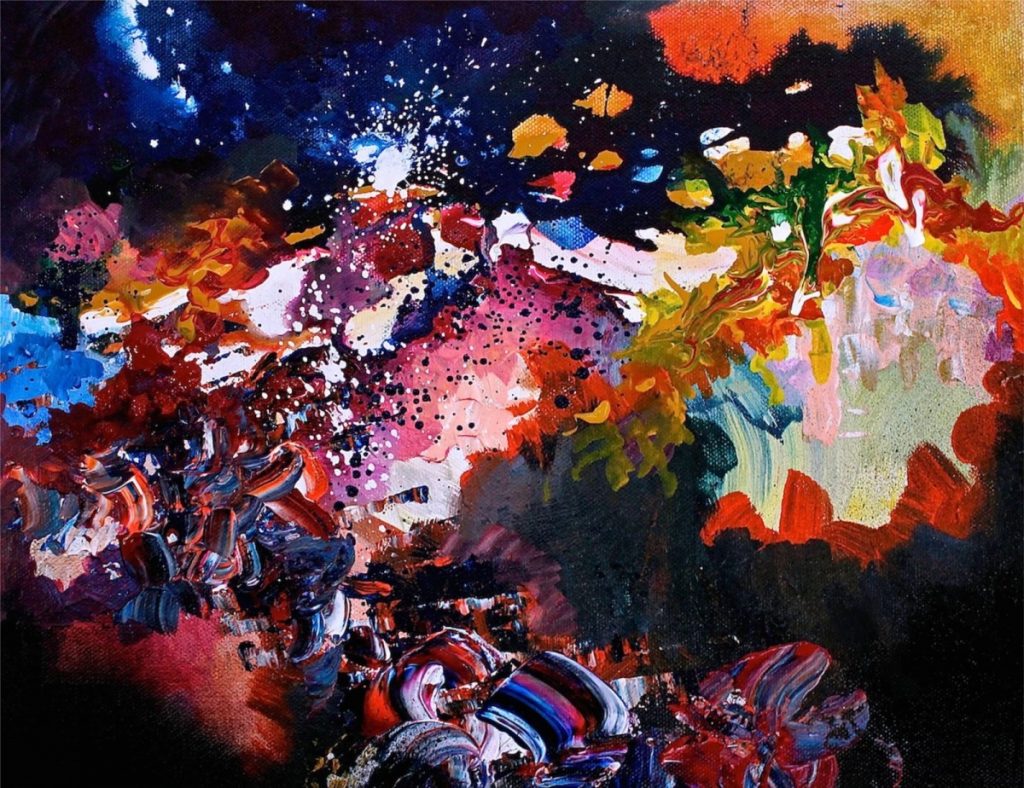Synesthesia refers to the phenomenon in which stimulation of one sense modality gives rise to a sensation in another sense modality (Harrison and Baron 1994). I know it sounds tedious and confusing. To put this definition into plain and simple terms, a few concrete examples might help. Imagine seeing waved colors when listening to your favorite song. Or feeling a taste of sweetness every time seeing a rectangle. Letter Q is magenta to you, while number 7 is just bright yellow. How about now?
The information sources of human’s five sensory systems (visual, auditory, olfactory, gustatory, and tactile) are completely different and their operating mechanisms are also different, but they do not work independently of each other. In fact, it’s possible that there are certain interactions between them, and after being processed separately, the information is sent to and integrated in higher cortical regions.
To some extent, we might all have some extent of “synesthesia”: most of us tend to feel blue and melancholy during rainy nights, and colors like red and orange represent warmth, as opposed to calmness symbolized by blue and green. However, as illustrated in the examples earlier, the real synesthetes are usually born to have stronger and rare automatic connections between certain sensory inputs, like colors and characters. A simple test to check if someone is a synesthete is to ask the person to pair each number with a color (the order of the number given is random), and ask the same person to pair again (given a different order of numbers) after several weeks. Comparing answer one with answer two, a person with synesthesia will have all or most of the number-color pairs the same in both answers.

What’s more, a recent research (Rothen et al. 2014) found out that, in fact, adults can be trained to become synesthetes! Associative learning (remember Pavlov’s dog?) was used by researchers as their training strategies. Non-synesthetic adult participants engaged in an extensive 9-week training regime that involved adaptive memory and reading tasks, designed to reinforce 13 specific letter-color associations. After the training, high automatic letter-color associations were observed, indicating that synesthetic experiences can be trained.
The following figure comes from the same research, showing participants’ color consistency scores for the 13 trained and 13 untrained letters before and after training. A lower score reflects increased color consistency. Values below the dashed line are standardly assumed to signify genuine synesthesia.

Synesthesia is not that rare, though; it’s a condition that presents in 2%–4% of the population, so you might even know someone who is a synesthete! It is also a phenomenon that both artists and psychologists have studied since the 19th century. While artistic experiments focus on exploring the perceptual and emotional aspects of synesthesia using devices to simulate synesthesia (i.e., color organs, musical paintings, and visual music), psychological experiments and studies approach synesthesia from a neurological perspective (Campen 1999). I first learned about this neurological phenomenon in my AP psychology classes, and I was so fascinated by the diverse possibility of human perceptions. Though I’m not a synesthete, I did do some research about this special and gifted group of people. Our class’s topic reminded me of them, so I’m basically just wondering: what does synesthetes’ art look like? So I took a look into these special artists.
First of all, an intensive amount of literary works involve the usage of synesthesia. One of them is the “Voyelles” or “Vowels”, a sonnet in alexandrines written by Arthur Rimbaud. The sonnet arbitrarily assigns to each of the vowels a different, specific color (Kathleen 2011), corresponding to the most prevalent form of synesthesia, audition colorée, the phenomenon of seeing colors when hearing music or vowel (Campen 1999). Below is the whole poem:
A Black, E white, I red, U green, O blue : vowels,
I shall tell, one day, of your mysterious origins:
A, black velvety jacket of brilliant flies
Which buzz around cruel smells,
Gulfs of shadow; E, whiteness of vapours and of tents,
Lances of proud glaciers, white kings, shivers of cow-parsley;
I, purples, spat blood, smile of beautiful lips
In anger or in the raptures of penitence;
U, waves, divine shudderings of viridian seas,
The peace of pastures dotted with animals, the peace of the furrows
Which alchemy prints on broad studious foreheads;
O, sublime Trumpet full of strange piercing sounds,
Silences crossed by Worlds and by Angels:
O the Omega, the violet ray of Her Eyes!
Besides, a lot of extremely talented painters, too, are synesthetes. For instance, Melissa McCracken, a 26-year-old painter from Kansas City, has chromesthesia: she spontaneously and involuntarily sees colors when listening to music (Jess 2017). According to McCracken, expressive music such as funk is a lot more colorful, guitars are generally golden and angled, and piano is more marbled and jerky because of the chords. What’s more, a song might look different depending on what she’s focusing on.

RADIOHEAD, “KARMA POLICE.” Melissa McCracken.
A lot of well-known pop singers and songwriters are also synesthetes: Billie Eilish, Lady Gaga, Kanye West… In one of her interviews, Billie Eilish explained the way she visualize her music: “I think visually first with everything I do, and also I have synesthesia, so everything that I make I’m already thinking of what color it is, and what texture it is, and what day of the week it is, and what number it is, and what shape.”
Works Cited
- J. Harrison, S. Baron-Cohen. 1994. Synesthesia: An Account of Coloured Hearing. Leonardo 27. No. 4, 343-346.
- Bor, D., Rothen, N., Schwartzman, D. et al. Adults Can Be Trained to Acquire Synesthetic Experiences. Sci Rep 4, 7089 (2014). Available from https://doi.org/10.1038/srep07089
- Van Campen, C. 1999. Artistic and Psychological Experiments with Synesthesia. Leonardo. [Internet]. [cited 2021 Mar 1]; 32(1), 9-14. Available from http://www.jstor.org/stable/1576620
- Kuiper, Kathleen. 2011. Voyelles, poem by Rimbaud. Encyclopædia Britannica. [cited 2021 Mar 1]. Available from https://www.britannica.com/topic/Voyelles
- Denham, Jess. 2017. This Artist with Synesthesia Sees Colors in Music and Paints Your Favorite Songs. VICE. [cited 2021 Mar 1]. Available from https://www.vice.com/en/article/gyxq73/melissa-mccracken-synesthesia-painter-interview
- Nattress, Katrina. 2019. Billie Eilish Explains How Synesthesia Affects Her Music. iHeartRADIO. [cited 2021 Mar 1]. Available from https://www.iheart.com/content/2019-05-29-billie-eilish-explains-how-synesthesia-affects-her-music/
First of all, let me say the art piece you posted was amazing. I thought being able to hear colors and other variations of sensing stimuli in the non-conventional method is really interesting. It kind of reminds me of top-down processing as well as the brain is “messing around” with our base senses. It’s also like the brain is rerouting everything in a similar manner. This was a very interesting read!
I really like the topic! The connection between different senses is interesting for me. It is how you put those connections with a simple and scientific explanation that amazed me! Using your post, I could be trying with different imageries or using music to create drawings. This blog is eye opening!